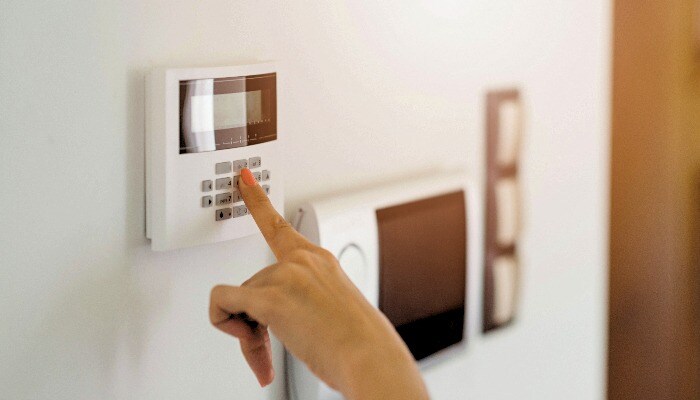Choosing the right flowers can be a delightful yet daunting task, especially when considering the personality of the recipient. In Naremburn, where the vibrant floral scene is as diverse as its residents, local florists offer an array of options tailored to suit every individual. This article explores various flower choices that align with different personality types, ensuring that your floral gift is not only beautiful but also meaningful.
Understanding Personality Types
Before diving into specific floral selections, it’s essential to understand the different personality types that can influence flower preferences. Psychologists often categorise personalities into various types, such as extroverted, introverted, creative, and practical. Each type has unique traits that can be complemented by specific flowers.
Extroverted Personalities
Extroverts are known for their outgoing nature, love for social interactions, and vibrant energy. They often appreciate bold, bright flowers that reflect their lively spirit.
For extroverted individuals, consider selecting sunflowers or gerberas. Sunflowers, with their large, cheerful blooms, evoke feelings of happiness and warmth, making them perfect for someone who thrives in social settings. Gerberas, available in a spectrum of colours, can add a playful touch to any arrangement, resonating with the extrovert’s vivacious personality. Additionally, flowers like tulips, which come in various vibrant hues, can further enhance the lively atmosphere that extroverts often create, making them a delightful choice for celebrations or gatherings.
Introverted Personalities
On the other hand, introverts tend to be more reserved and introspective. They often appreciate subtle beauty and elegance in their floral gifts.
For those with an introverted disposition, delicate flowers such as lilies or lavender can be ideal choices. Lilies, with their graceful appearance and soothing fragrance, provide a sense of calm and serenity, appealing to the introvert’s love for tranquility. Lavender, known for its calming properties, can also serve as a thoughtful gift, offering both beauty and a relaxing scent. Moreover, flowers like forget-me-nots, which symbolize remembrance and connection, can resonate deeply with introverts, who often value meaningful relationships and quiet moments of reflection. These gentle blooms can serve as a reminder of cherished memories, making them a perfect addition to any introverted individual’s floral collection.
Creative Personalities
Creative individuals often have a unique perspective on the world, and their flower choices can reflect their artistic inclinations. They tend to appreciate unusual arrangements and exotic blooms that stand out.
Unconventional Selections
For the creative soul, consider selecting flowers like proteas or orchids. Proteas, with their striking appearance and unique shapes, can serve as a conversation starter and a reflection of the recipient’s artistic flair. Orchids, known for their exotic beauty, come in various colours and forms, making them a versatile choice for those who appreciate the finer things in life. Additionally, incorporating flowers such as anemones or ranunculus can add a whimsical touch, as their delicate petals and vibrant hues evoke a sense of playfulness that resonates with the imaginative spirit.
Personalised Arrangements
Another excellent option for creative personalities is a personalised bouquet. Florist Naremburn can craft bespoke arrangements that incorporate the recipient’s favourite flowers or colours, ensuring that the gift resonates on a deeper level. This thoughtful approach not only showcases the recipient’s individuality but also highlights the giver’s consideration and effort. Furthermore, adding elements such as dried flowers or foliage can enhance the bouquet’s texture and visual interest, creating a stunning piece that tells a story. The inclusion of seasonal blooms can also reflect the time of year, making the arrangement not only beautiful but also timely and relevant, which is often appreciated by those with a keen eye for detail.

Practical Personalities
Practical individuals often appreciate functionality and simplicity in their floral gifts. They may prefer flowers that are easy to care for and have a longer lifespan. This preference reflects their overall approach to life, where efficiency and utility take precedence over extravagance. For them, a bouquet that wilts within days is simply not an option; they seek out arrangements that will continue to bring joy and beauty into their lives for an extended period.
Durable Choices
For the practical personality, consider flowers such as chrysanthemums or succulents. Chrysanthemums are not only visually appealing but also known for their longevity, making them a suitable choice for someone who values practicality. These flowers come in a variety of colours and shapes, allowing for a personalised touch that can still align with their straightforward nature. Succulents, while not traditional flowers, offer a unique twist and require minimal maintenance, appealing to the practical nature of the recipient. They can thrive in various environments and often only need watering once a week, making them ideal for those with busy lifestyles or less-than-green thumbs.
Low-Maintenance Arrangements
Florists in Naremburn can also create low-maintenance arrangements that combine durable flowers with greenery. This approach not only enhances the aesthetic appeal but also ensures that the recipient can enjoy their gift without the stress of constant care. Incorporating elements such as eucalyptus or ferns can add texture and depth to the arrangement while still being easy to maintain. Additionally, these arrangements can be designed in a way that complements the recipient’s home decor, further enhancing their practicality. For instance, a stylish ceramic pot or a rustic wooden planter can elevate the overall presentation, turning a simple gift into a thoughtful statement piece that aligns with their practical sensibilities.
Romantic Personalities
For those who embody romance, flowers are often a symbol of love and affection. Romantic personalities tend to gravitate towards classic blooms that evoke deep emotions.
Timeless Roses
Roses are the quintessential romantic flower, available in various colours, each carrying its own meaning. Red roses signify passionate love, while pink roses convey admiration and gratitude. For a romantic gesture, a bouquet of mixed roses can beautifully express a range of emotions, making it a perfect gift for anniversaries or special occasions.
Seasonal Blooms
In addition to roses, seasonal blooms such as peonies or tulips can also resonate with romantic individuals. Peonies, with their lush, full petals, are often associated with romance and prosperity, while tulips offer a simple yet elegant charm. Seasonal arrangements can add a personal touch, showcasing the beauty of nature throughout the year.
Thoughtful Gifting for Every Occasion
When selecting flowers, it’s important to consider the occasion as well as the recipient’s personality. Different events may call for specific types of arrangements, and Naremburn florists are well-equipped to cater to various needs.
Celebratory Events
For celebrations such as birthdays or promotions, vibrant and cheerful arrangements are ideal. Brightly coloured flowers like daisies or mixed bouquets can convey joy and excitement. Additionally, incorporating balloons or decorative elements can enhance the festive feel of the gift.
Sympathy and Support
In times of loss or hardship, flowers can serve as a comforting gesture. Soft, muted colours such as whites and pastels are often preferred for sympathy arrangements. Lilies, roses, and chrysanthemums can be combined to create a serene and respectful tribute, providing solace to those in mourning.
See Also : Florist Waverton Choosing the Right Colour Palette
Local Naremburn Florists: A Community Resource
Naremburn is home to a variety of talented florists who understand the importance of personalised service. These local businesses not only offer beautiful arrangements but also provide insights into the best flower choices based on personality and occasion.
Supporting Local Businesses
Choosing to purchase flowers from local Naremburn florists not only supports the community but also ensures that the flowers are fresh and sourced sustainably. Many local florists pride themselves on using seasonal blooms, which not only enhances the quality of the arrangements but also reduces the environmental impact associated with long-distance transportation.

Expert Advice
Florists in Naremburn are often more than just sellers; they are passionate about their craft and can offer expert advice on flower care, arrangement styles, and seasonal availability. Engaging with these professionals can lead to a more meaningful gifting experience, as they can help tailor the perfect bouquet for any personality type.
Conclusion
Choosing the right flowers for someone is an art that combines understanding personality traits with the beauty of nature. In Naremburn, florists provide a wealth of options that cater to every personality, ensuring that your floral gifts are not only visually stunning but also deeply resonant. Whether it’s for a celebration, a gesture of sympathy, or simply to brighten someone’s day, the right flowers can convey emotions that words sometimes cannot express.
By considering the recipient’s personality and the occasion, one can select flowers that truly reflect their sentiments. With the expertise of local florists, finding the perfect arrangement becomes a delightful experience, enriching both the giver and the receiver. Embrace the beauty of flowers and let them speak the language of love, friendship, and support in every bouquet.































